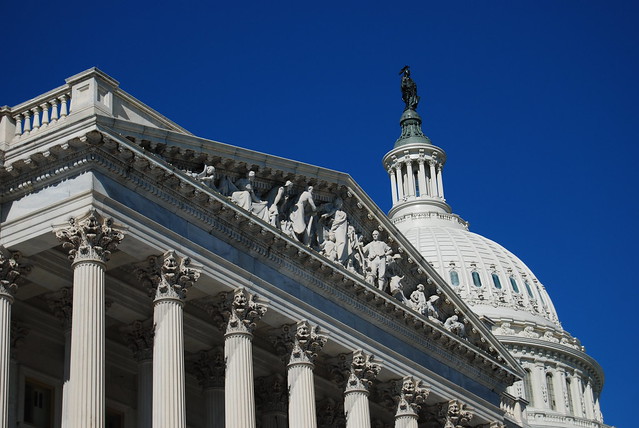House Bill Funds Government for Remainder of the Year
By
Chris Hellman
Posted:
|
Budget Process,
Military & Security
Image courtesy of acmoraes
Monday House Appropriations Committee Chair Hal Rogers (R-KY) introduced a bill that would extend the current stop-gap funding for government operations through Sept. 30, the end of the current fiscal year. The entire federal government has been operating without a budget since fiscal year 2013 began back on Oct. 1, and the current temporary spending bill – known officially as a continuing resolution (CR) – is set to expire on March 27.
The legislation introduced yesterday would extend the current spending bill through the end of the fiscal year – in other words, Congress is proposing to go through this entire fiscal year without passing an actual budget. However, this new legislation did include an actual budget for just two areas of government – Defense and Military Construction-Veterans Affair. All other federal programs would be funded with another stop-gap funding measure.
The House set total discretionary spending in this new bill at $1.043 trillion. The bill assumes $85 billion in across-the-board spending cuts will be applied as a result of the sequestration order signed by President Obama on March 1. Of that $1.043 trillion in total spending, $518 billion is for the Pentagon’s base budget. The bill also includes $87 billion for war costs. That means the House proposes spending around 58 percent of all discretionary spending in fiscal 2013 on military operations.
The CR also includes $71.9 billion for military construction and the Department of Veterans Affairs, $210 million above FY2012 funding levels. The remaining $366 billion of spending will fund all other domestic discretionary programs – like education, social service programs, environmental protection, and food safety.
The full House is expected to consider this legislation later this week.
Click here to see the text of H.R. 933.
NOTE: An earlier version of this article set total discretionary spending in the new bill at $982 billion, a level which reflects the impact of sequestration.
